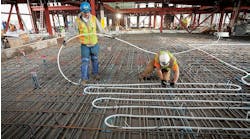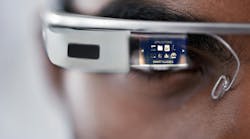Latest from Best Practices
Sponsored
How Wearables are Changing Construction and Contracting
Technology in the construction sector continues to advance every day. With the proliferation of smart wearable items in daily life, the focus has turned to how revolutionary and portable functionality can enhance convenience, safety, and efficiency in the construction sector. A Results in Engineering survey found that 54% of field laborers are willing to wear biometric sensing devices, indicating increased interest and acceptance of smart wearables.
While the innovations still need time before being universally adopted, some use cases and key players have already emerged in the industry. Read on to learn how smart wearables are currently used and how the technology could be leveraged in construction and contracting.
Existing Applications
Integrating smart technology into various fields is revolutionizing industries worldwide, giving people better control over operations and improving overall service quality. However, as portability becomes a higher priority, wearables like watches, headsets, and glasses are proving their worth in various applications.
Wearables provide a unique first-person perspective that may prove beneficial in creating immersive visual output. To illustrate, the livestream and AI functions of Ray-Ban Meta smart glasses allow users to capture exactly what they see and hear, thanks to an ultra-wide camera and five-mic system. Since they also come in sleek styles, like the Ray-Ban Meta Wayfarer, professionals in industries like fashion and content creation can make use of its features without any bulk.
Voice command capabilities allow for hands-free calls, messages, and content capture. Such hands-free tech is especially essential for people who work in labor-intensive industries. Camera-equipped wearables are also valuable in businesses where thorough documentation and compliance are expected.
Generally, wearables can also be used by professionals for easy access to data, all while acting as an extension of a smartphone. One prominent example is in healthcare, where technological interventions could alleviate burdened hospital systems. For instance, Vuzix's smart eyewear is increasingly used in various medical cases. The Vuzix M4000 may assist in identifying the ideal stent for a patient based on past observed heart surgeries or provide streaming capabilities to remote experts who can provide additional assistance and insight. These features may help doctors make quicker diagnostic decisions, improving patient turnover rates and enhancing efficacy.
Other wearables, such as watches, play a role in workplace safety as workers in dangerous environments can equip wearables with sensors to detect hazardous elements and help prevent accidents. These features make this variety of smart tech particularly vital for construction and contracting, where compliance, communication, and safety are the key to efficient operations.
Construction and Contracting
Over 60,000 life-threatening injuries are seen in the construction industry every year. Given the high rate of dangerous incidents, an Automation in Construction review noted the emergence of construction-sturdy smart wearables. These could identify markers of stress or fatigue among workers before they result in injury or death. They can also alert workers—for whom visibility and hearing may be compromised while on site—to imminent dangers in their surroundings.
For example, Knowit's smart hard hats monitor the environment and warn the wearer of potential fall risks, nearby dangers, and factors like temperature changes, shaking, or impacts. It is connected to a data collection platform to enable outside monitoring, making it easy for safety personnel to monitor multiple workers on a large site. Smart safety wearables help improve wearers' efficiency while reducing the risk of workplace accidents.
Structural integrity is another aspect of safety in this field. In a 2023 study of various construction stakeholders, the top three required technologies brought up were related to structure inspection. Augmented reality (AR) glasses could give workers access to safety guidelines and structural schematics as they navigate a work site, allowing them to cross-check requirements with output and remedy any identified issues.
Overall, the future of wearables in construction and contracting is promising. As existing innovative technologies are refined and conceptual ones become a reality, consumers and suppliers alike can look forward to a safer, speedier, and more streamlined world.
Colleen Anderson is a freelance writer based in Florida. She writes primarily about technology and business and hopes to find a role covering one or both subjects for an online magazine or journal in the near future.
Colleen Anderson
Colleen Anderson is a freelance writer based in Florida. She writes primarily about technology and business and hopes to find a role covering one or both subjects for an online magazine or journal in the near future.


